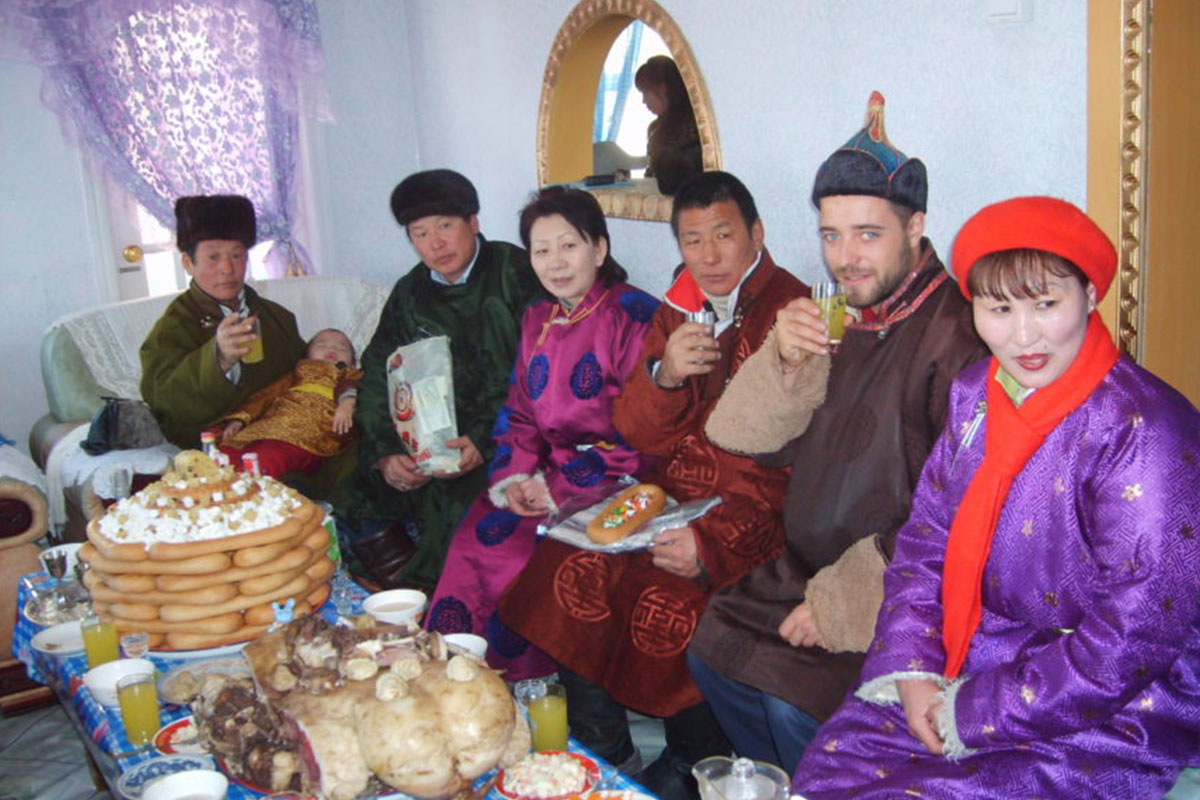Tsagaan Sar, also known as the White Moon Festival, is a traditional lunar New Year celebration in Mongolia. It is celebrated at the end of January or beginning of February, based on the lunar calendar, and is one of the most important cultural events in Mongolia.
The celebration of Tsagaan Sar lasts for several days, and includes various activities such as singing, dancing, feasting, and the exchange of gifts. Family members gather to pay respect to the elderly, participate in traditional games, and to renew relationships. It is considered a time for wishing for health, happiness, and prosperity in the new year.
One of the central elements of Tsagaan Sar is the “airag” or fermented mare’s milk, which is traditionally served in a special bowl called a “dzuur”. The airag is considered a symbol of renewal and purity, and is shared among family members as a sign of unity and good luck. The meal itself is a grand feast that can include dishes such as boiled mutton, rice, and curd.
Another important aspect of Tsagaan Sar is the gift-giving tradition, where family members exchange gifts with one another, such as traditional clothing or sweets. It is customary for children to receive new clothes and for the eldest member of the family to receive the most respect.
In addition to the food, drink, and gift-giving, Tsagaan Sar is also a time for various cultural and traditional games, such as horse racing, wrestling, and archery. These games are not only a way to celebrate the new year, but also a way to showcase the skills and strength of the participants.
In conclusion, Tsagaan Sar is a rich and vibrant cultural celebration that has been a part of Mongolian tradition for centuries. It is a time for families to come together, renew relationships, and wish for health, happiness, and prosperity in the new year. Through the exchange of gifts, traditional games, and feasting, Tsagaan Sar is a celebration of the values, heritage, and traditions that make Mongolia unique.



0 Comment